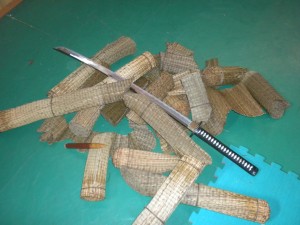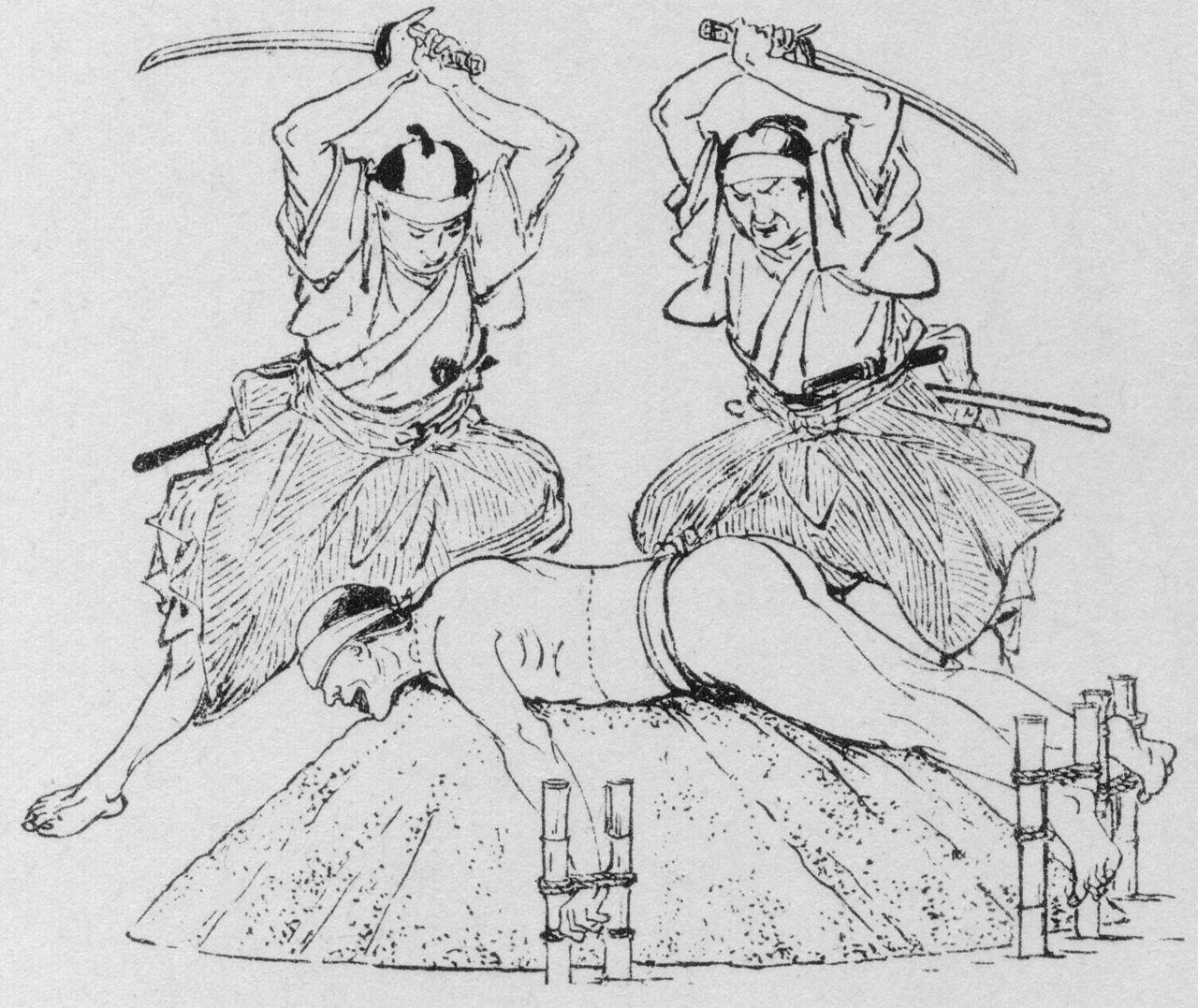Tameshigiri - From people to mats
Testing the history of the use of the Japanese Sword.
Modern Tameshigiri is a martial art discipline that focuses on performing cutting tests with a Japanese sword against an object, usually tatami, that focuses on training the practitioner's skill with a sword. Traditionally, the focus has been more on testing the quality of the sword, so tameshigiri has multiple purposes.
The term Tameshigiri is made up of two verbs, namely tamesu and kiru which can be translated as test and cut respectively. So in translation this is test cutting, or test cutting if you translate this.
Tameshigiri
For a swordsmith it was very important to know whether the techniques he used in swordsmithing lead to the desired quality of the sword. So he sometimes tested that himself, but often a trained swordsman or samurai was also used to judge this.
For the samurai themselves it was a matter of life or death whether the sword they carried could be trusted in battle. This form of training is therefore hundreds of years old, and its origins lie in the use by samurai to test the sharpness and strength of their Katana sword.
There are examples in ancient Japanese writings of the samurai using random passers-by to test their swords. This was called Tsugi Giri or literally crossroad killings. Eventually this was banned. Also, the testing of the sword simply happened during the many wars that raged in the koto period.
Tameshigiri was standardized in the Edo period (17th century) for testing the quality of Japanese swords. Only the most skilled swordsmen, often samurai, were chosen to test the swords, to rule out that it was not up to the sword tester's skills to determine how well the sword cut. Various materials were used, but also cadavers and bodies of convicted criminals. During the early edo period, the Tokugawa Shongunate legislated so that Tameshigiri was mainly used as a judicial punishment. From the bushi or warrior class it was a win-win situation to use a criminal already sentenced to death to test a sword.
Tameshigiri was not a punishment in itself, there were many ways in which someone could be put to death, such as burning, sawing as well as crucifixion. This depended on the seriousness of the criminal offense committed. Seppuku or ritual suicide also fell under this category. After the verdict, only skilled swordsmen were allowed to carry out the punishment, so you are talking about the beheading of the condemned. Testing a sword on someone already sentenced to death was often an additional punishment and was often carried out immediately after the actual sentence in which someone had already died.
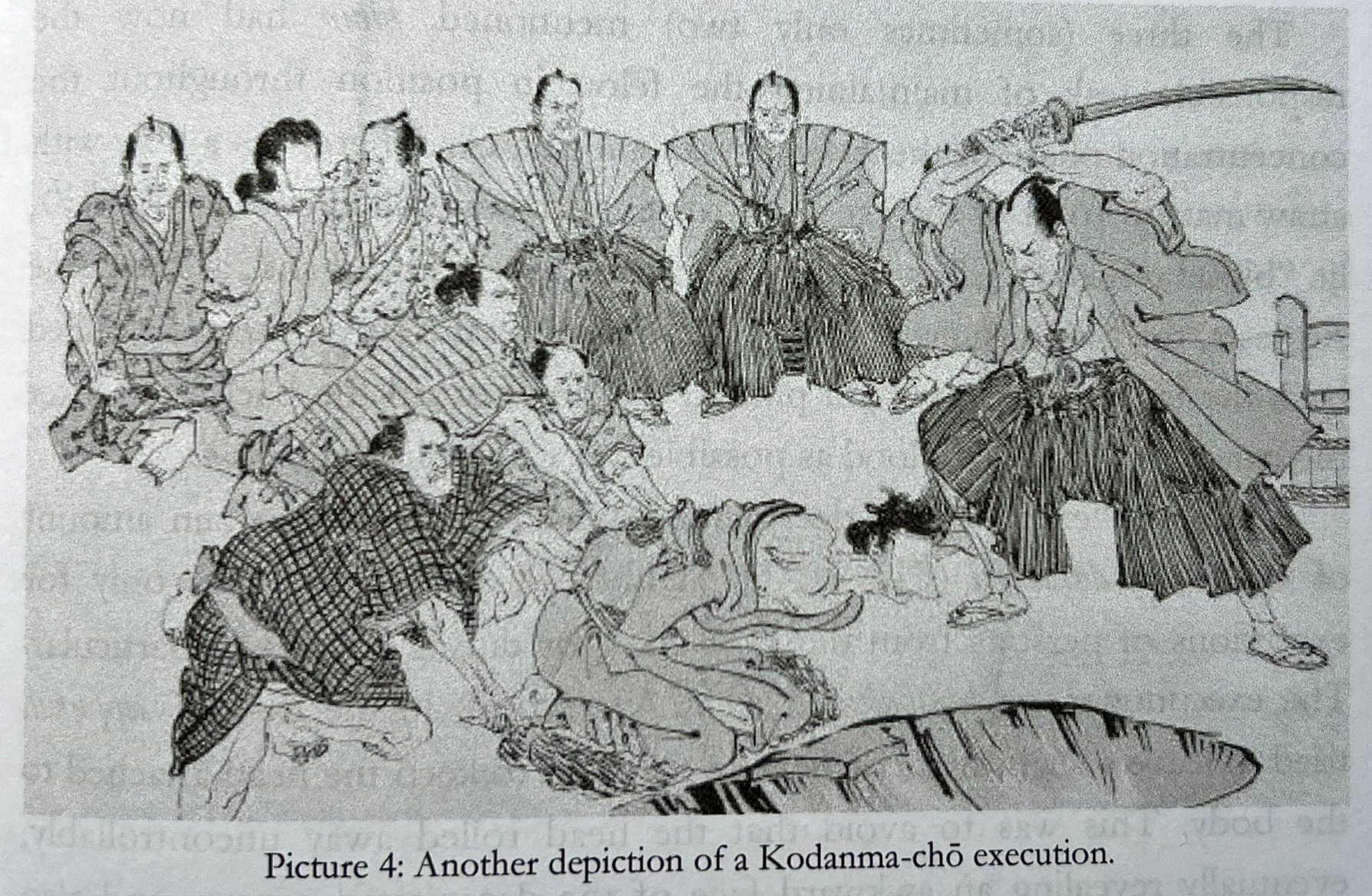
Shizai execution (death penalty by beheading)
The cadavers were examined on the basis of the cuts. With the people used as objects, the techniques and amount of body were often depicted on the tang or nakago of the sword. This is called a tameshi-mei or saidan-mei. These were usually inlaid with gold and caused a huge increase in the value of the sword. Usually these pieces are becoming very rare and very large sums are being paid for them. It was then the best way to know how sharp, balanced and resistant and therefore of quality the sword was.
There are records that for very special swords, several bodies were often tied together and that it successfully passed through the 7 spines of bodies stacked on top of each other. Often bodies were carefully inspected before being cut to check for disease, mainly because it was believed that disease would make the pure sword unclean. This could affect the soul of the sword and this was wanted to prevent from (super) belief.
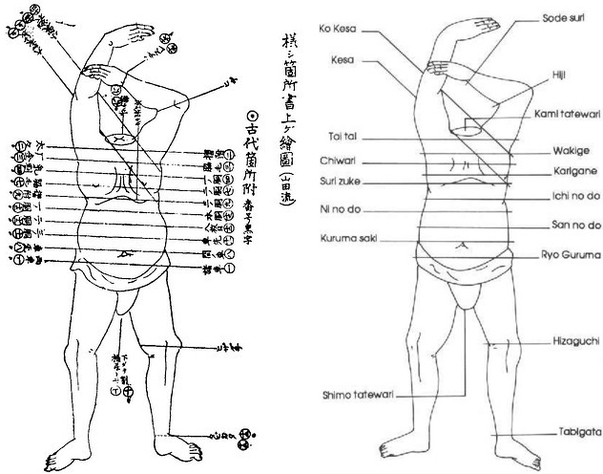
Tameshigiri Cuts
Around 1868, during a transition period in the Meiji period that transitioned into Japan's modernization, testing cutting on criminals became illegal. The bodies were replaced with tatami (mats) often with a core of bamboo to achieve the resistance, density and consistency to meet the human test goals.
Modern Tameshigiri
Today, Tameshigiri is almost a martial art that focuses on performing cutting tests with a Japanese sword against an object - usually tatami - in the cleanest, most efficient, and often most elegant way possible. With the emergence of Japanese swordsmanship with such as Shinkendo, Tenshin Shoden Katori, Kenjutsu, Yagyu Shinkage Ryu, Shindo Yoshin Ryu, Toyama Ryu, Nakamura Ryu. The development of the pure testing of the sword has today partly shifted to the skills of the practitioner. From its dark origins on human testing, it has developed into an important part in the practice of and with the katana on materials with an authentic origin.
You can now find dozens of videos on YouTube that allow practitioners to demonstrate their tameshigiri skills. This is often done with exams and demonstrations.
During demonstrations with the sword, Tameshigiri mainly aims to show the skill of the practitioner. Sword techniques in which the tatami barely moves when the katana cuts through often show correct execution. The more complex techniques even show cuts in the air.
During this Japanese exercise, the targets are usually placed vertically so that it is possible to make repeated cuts even when the target is in the air.
Tatami
With tameshigiri, tatami is often used for the performance. These are mats made from rice straw and are used for the traditional Japanese cutting tests. With the implementation you sometimes see that a mat is placed horizontally on another mat. The reason for this is to imitate a human torso.
In Tameshigiri you have a wide variety of technical execution such as cuts that alternate diagonal, vertical and horizontal cuts in all sorts of ways.
For example, common cuts in the Japanese martial arts are the downward diagonal Kesa-giri (袈裟斬り), upward diagonal (Kiri-age (切り上げ) or Gyaku-kesa (逆袈裟)), horizontal (Yoko (横) or Tsuihei), and straight down (Jōdan-giri (上段斬り), Happonme (八本目), Makkō-giri (真向斬り), Shinchoku-giri (真直切り), or Dotan-giri (土壇切り).
Initially, the practitioner often starts by opening the sword by pushing the saya back slightly while drawing the sword and performing the sword technique. Of course everything has to be done with great concentration because the sword has a razor-sharp blade and if you do it wrong there is a high chance of an accident. It is therefore very important to get a lesson in this first so that everything can run safely.
Tameshigiri as a martial art
In the tameshigiri you will find many traditional rituals with many names for the cuts and an extensive protocol for safety.
It may seem a bit simple, but the complex cuts you learn as real attacks to perform efficiently and technically correctly are very difficult and require many years of training. The beginning of the tameshgiri path is often a wooden bokuto (wooden training sword, bokken), then an iaito or blunt training sword and finally training with a shinken or sharp sword. You must first learn all the basic skills of a swordsmanship before you can start tameshigiri.
Ultimately, this makes sense because you first need to be able to use a katana safely before you can focus on technically improving your strokes so that you get clean cuts.
You often speak of light tamshigiri if you only use tatami. Often bamboo was also used wrapped with tatami because it has great similarities in terms of resistance with a human body. The tatami as the skin and the bamboo for the bones.
Different geometric aspects of the blade or blade are important for the different purposes. The materials can differ in hardness, structure, thickness and flexibility. What an important concept for the cut is niku, literally meat. This determines the thickness and also the sharpness of the blade. A Stanley knife is very sharp but has no niku or mass behind the edge, making it unsuitable for thicker targets. A blade with niku has more mass behind the edge and is much more resistant to greater impact when the blade hits the target. Niku', which is actually the Japanese word for 'meat' or the flesh on the edge of a sword. You can talk about the degree of roundness and curvature of the ji surface. A sword blade with niku has a curvature and a blade without niku has a smooth and flat surface. This does not necessarily have to be bad, these are often slightly sharper and also suitable for light exercises.
Before training with the sword it is always important to do a number of safety checks. Forces are exerted on the tsuka or handle, so it is important to feel whether there is any play. The mekugi must also be firmly in the handle, these are the bamboo pegs that anchor the blade in the handle. A general check to see if the sheet is still in order is certainly part of the check.
If the mekugi is damaged or missing, another one in good condition should be placed immediately to avoid any kind of accident.
After training you do maintenance and clean the katana. You remove the old oil completely and provide it with a new layer over the entire blade. This does not have to be too much because this ensures that the wood of the sheath is affected. You can choose different protection including choji oil or camellia. Some people use a general weapon oil such as a CLP or ballistol, these are not traditional oils but do provide protection, as the purpose is to protect the steel. You do this by separating the blade from the air by means of the oil. It also doesn't hurt to tap the ground gently with the koiguchi or opening of the scabbard so that the dirt can fall out.
One of the most commonly used targets in tameshigiri is tatami omote or rice straw mats. This has been used since ancient times because it can be found everywhere in Japan and has a good consistency to test a katana on. As mentioned earlier, bamboo tatami has a hardness similar to human flesh and bones.
Before testing, you usually immerse them in water for quite some time, so that the mats are filled with water. The consistency of the tatami omote changes with the soaking, which will make the cuts cleaner. Before use, let them drain for a while so that it does not get wet, this can also be very dangerous because you could slip. Make sure you have a sturdy tatami stand so that everything can run safely. You can roll up the mats with rope, but don't be too sparing with this because your mats will not roll out quickly so that you can enjoy your tatami longer. Usually a wooden plug is needed at the bottom, pull it tight so that your mat stays straight.
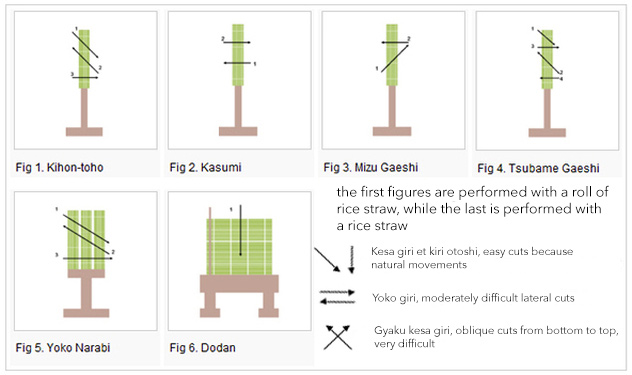
Tameshigiri Techniques
The different movements you see all have different names and as people who often train these tameshigiri often experience the pattern and know the name.
You can find patterns for beginners as well as some for those experienced in the art of the Tameshigiri. Not only Japanese but also Korean swordsmanship is practiced extensively. So in good Tameshigiri you will not only find the correct technique with speed (tachisuji), the right angle of the blade (hasuji), power and momentum of the blade. The direction of the grain of the tatami will affect the difficulty as will the sharpness of the blade. But also the right correct frame of mind, with zanshin and determination which you can only cultivate by engaging in a traditional martial art.
You can divide the tameshigiri techniques into beginners to advanced. Beginner exercises are, Sayuw Kesa Giri, Sayuw Kesa / Gyaku Kesa Giri, Godan Giri, Rokudan Giri
Intermediate techniques are, Futo Giri, Yoko-Narabi, Dodan, Tsubame Gaeshi, Inazuma Giri, Gyaku-Inazuma Giri, Nami Gaeshi.
The real advanced techniques are Daruma otoshi, Dow Barai, Kasumi, , Kawasemi, Makuri,Mizu Gaeshi,Mizu Guruma,Nuki Uchi,Syo Hatto,Tombo,Zengo-no-teki

Conclusion
From a distant and dark past, tameshigiri has developed into a (part of a) discipline that you can find in many martial arts. Before someone gets involved in this, it is necessary to first study and take lessons at a reputable organization. A tameshigiri katana must meet many requirements so that everything can be practiced safely. Of course it is most logical to get advice on this from the teacher of the relevant martial art discipline where you are being taught. This can give good advice whether you are ready to buy a katana and which one would be suitable. My personal advice is to look at the entire quality of the sword, including the handle and the mekugi, overall mounting quality, full tang blade, quality differential or hardened blade, correct steel grade, dimensions, weight and good balance. It is also relevant to remember that different swords can have different purposes and therefore there is often not 1 sword that is suitable for all purposes. By this I mean that a katana that you use for kata is probably not suitable for heavy tameshigiri or cutting.
